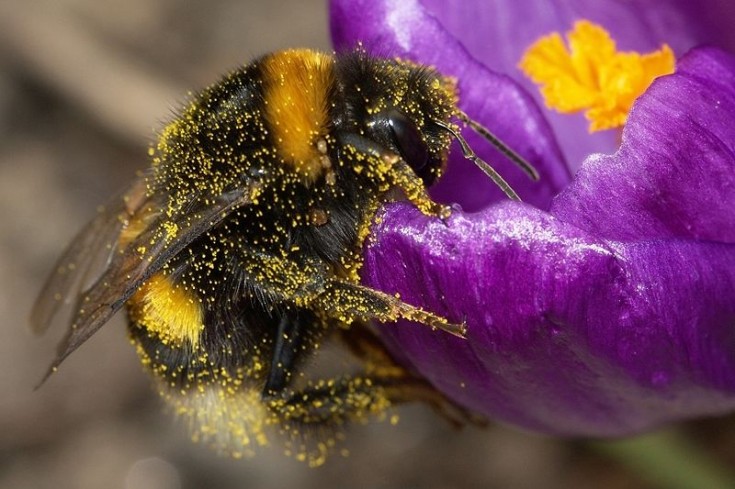 We all know how bees use flowers to collect pollen for food and sustenance. You might even be aware of how bees see ultraviolet light, color and shape to determine different types of flowers. But, there’s more to pollination than just sight and smell — according to a very new study conducted by the University of Bristol and published in the journal Science, flowers actually communicate with bees through electric fields!
We all know how bees use flowers to collect pollen for food and sustenance. You might even be aware of how bees see ultraviolet light, color and shape to determine different types of flowers. But, there’s more to pollination than just sight and smell — according to a very new study conducted by the University of Bristol and published in the journal Science, flowers actually communicate with bees through electric fields!
“This is a big finding,” says Daniel Robert, who led the study. “Nobody had postulated the idea that bees could be sensitive to the electric field of a flower.”
Flowers and plants tend to possess negative charges and are electrically connected to the ground, allowing them to conduct electricity very slowly. Bees, on the other hand, have a positive electrical charge because they fly in air. When the two connect, sparks may not fly, but pollen sure does. “We found some videos showing that pollen literally jumps from the flower to the bee, as the bee approaches… even before it has landed,” says Robert.
Now the electric side of pollination isn’t exactly new, as far back as the 1970s, botanists suggested that electric forces enhance the attraction between pollen and pollinators. But it wasn’t until now that we started asking the right questions, “Does the bee know anything about this process?”
Biologists set up tests and determined bees actually use the charges of the plants to pinpoint their location! The bees, in turn, change the charge of whatever flower they land upon. This change can tell a bee whether a flower has been recently visited, and might be short of nectar. It’s like a sign that says “Closed for business. Be right back.”
Many animals can sense electric fields, including sharks and rays, electric fish, at least one species of dolphin, and the platypus. But this is the first time that anyone has discovered this sense in an insect. Bees and flowers have been studied intensely for decades, maybe centuries, and it turns out that they’ve been exchanging secret messages all this time.
“We are probably only seeing the tip of the electrical iceberg here,” says Robert.
Image & story via National Geographic


 Find Your
Find Your
Speak Your Mind